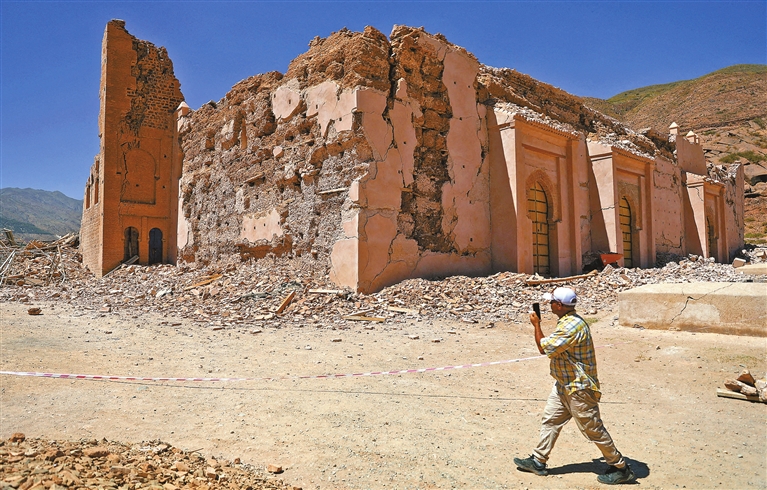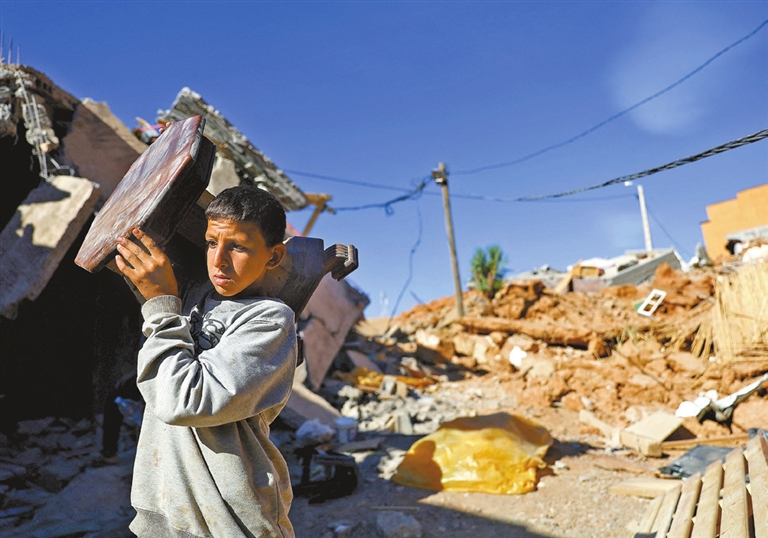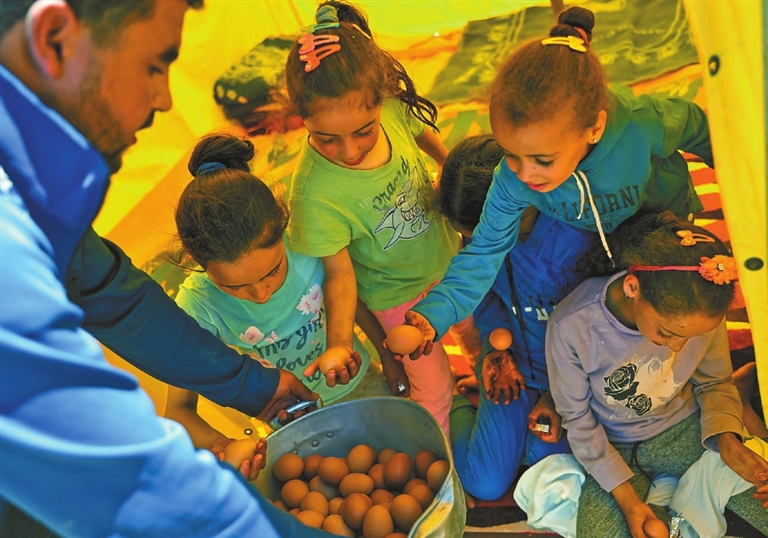


RESCUERS are racing against time to search for survivors as thousands died in a deadly earthquake that hit Morocco on Friday. The worst-hit region is largely rural, made up of red-rock mountains, picturesque gorges and glistening streams and lakes. Rescuers were struggling to reach these areas in the isolated, hard-to-reach Atlas Mountains, as roads leading up there were blocked by fallen boulders. Difficult rescue Emergency workers were deployed to affected regions, although some remote villages on the foothills of the mountain have been hard to access. Mohammed, 50, from the town of Ouirgane, lost four family members in the quake. “I managed to get out safely with my two children but lost the rest. My house is gone,” he said. Rescue operations are still ongoing. “We are out in the streets with authorities as they try to pull the dead from the rubble. Many people were transported to hospital in front of me. We are hoping for miracles from the rubble” he said. But destroyed roads to villages are making it hard to get aid into some of the hardest-hit regions, a Moroccan government official said. “The rescue efforts are ongoing to reach the difficult areas. The earthquake struck mountainous areas that are scattered geographically and it’s difficult to reach these areas in some cases,” the official said. Authorities are using helicopters to reach the worst-hit areas and machinery to remove the rubble from the impassable roads, he added. Inside and outside Marrakech, many residents have spent two nights on the streets, afraid to return to their homes. In the hard-hit central village of Moulay Brahim, south of Marrakech in the Atlas Mountains, a family is living in a makeshift camp on a soccer field, with authorities telling them it could be a week before they can go home. Firefighters are leading rescue efforts but some buildings are too dangerous to enter. Morocco’s government said it had activated all available resources to tackle the quake and urged people to avoid panic. King Mohammed VI of Morocco ordered that a relief commission be set up to distribute aid to survivors, including orphans and people who lost their homes in the disaster. The Moroccan military has built a huge tent camp and a field hospital on the edge of the town of Asni, near the epicenter of the earthquake. Hospital head Youssef Qamouss said he has 24 doctors and 48 nurses on site, but added the staff and its capacity — that currently stands at 30 beds — can be expanded. Qamouss and his team are used to working in disaster zones. They’ve been deployed to Jordan and the Ivory Coast in the past, helping with crises there. “We start with a triage to determine the needs of the patients, then send them to specialists,” he said. The hospital is formed of 16 large tents arranged in a horse shoe formation, each with a department sign. There is urgent care, ophthalmology, surgical tent, pediatrics and even a radiology department. “The most common injuries are burns, fractures, cuts, injuries to the face,” Qamouss said. The pharmacy tent was particularly busy in the first hours of the hospital’s operation, with many people trying to get hold of their regular medicines, which might have been lost in the earthquake, including blood pressure pills, insulin and others. Heavy losses At least 2,862 people have been killed in the earthquake and 2,562 have been injured, the country’s state-run broadcaster 2M said Monday. The quake is the strongest to hit the nation’s center in over a century, and its epicenter was not far from popular tourist and economic hub Marrakech. Its impact was felt far and wide, reaching as far north as Casablanca. The worst impact was in the province of Al Haouz, where nearly 1,500 people have died. The region, like many other badly affected locations, lies in the south of Morocco at the foot of the Atlas Mountains, and includes remote villages and settlements that have been difficult for rescuers to reach. Eyewitnesses in the foothills of the mountains said some towns are completely destroyed, with almost all the homes in an area of the Asni village damaged. The 6.8-magnitude earthquake hit at 11:11 p.m. local time Friday at a depth of 18.5 km, said the United States Geological Survey. Later, Morocco’s National Seismic Monitoring and Alert Network measured it at 7 on the Richter scale and a relatively shallow depth of 8 km. When an earthquake strikes, the shallower the depth is, the more destructive it could be. The earthquake also caused significant damage to many historical sites in the region, including the Tinmel Mosque, a 12th-century mosque located in Tinmel village in the High Atlas Mountains. The earthquake cracked and crumbled parts of the walls that surround Marrakech’s old city, a UNESCO World Heritage site built in the 12th century, while the city’s squares and traffic roundabouts were crowded with people seeking refuge. Videos showed dust emanating from parts of the Koutoubia Mosque, one of Marrakech’s best known historic sites. Morocco has suffered earthquakes in the past, but few in its history have been so powerful. This quake is Morocco’s deadliest since 1960 when an earthquake killed more than 12,000 people on its western coast, where the city of Agadir, southwest of Marrakech, crumbled. Elsewhere this year, a magnitude 7.8 temblor that shook Syria and Türkiye killed more than 21,600 people. International aid The International Federation of Red Cross and Red Crescent Societies (IFRC) previously cautioned that the immediate 24 to 48 hours were crucial for life-saving activities, and it anticipated that assistance might be required for an extended period, potentially spanning months or even years. Morocco has thus far officially accepted aid from Britain, Spain, Qatar and the United Arab Emirates, according to its interior ministry, although small teams of volunteer rescue workers from around the world have begun to trickle in. The global humanitarian network has allocated 1 million Swiss francs (US$1.12 million) from its emergency disaster fund to assist the Moroccan Red Crescent in its on-site efforts. On Saturday, the Red Cross Society of China announced that it would contribute US$200,000 in cash as emergency humanitarian assistance for its rescue operations and would follow the relief needs in the country. Fan Xiaosheng, chief of the Chinese medical team to Morocco, said the team is ready to help. “We have experienced orthopedic surgeons. We are on call any time if needed,” Fan said. Some 200 Chinese medical teams have been sent to the country to offer medical services to more than 6 million Moroccans in the past decades since the first Chinese doctors were dispatched to Morocco in 1975. Emergency response efforts are likely to continue as teams traverse mountain roads to reach villages hit hardest by the earthquake. Türkiye, Israel and Arab countries including Tunisia, Palestine and Algeria have also pledged assistance. (SD-Agencies) | 
